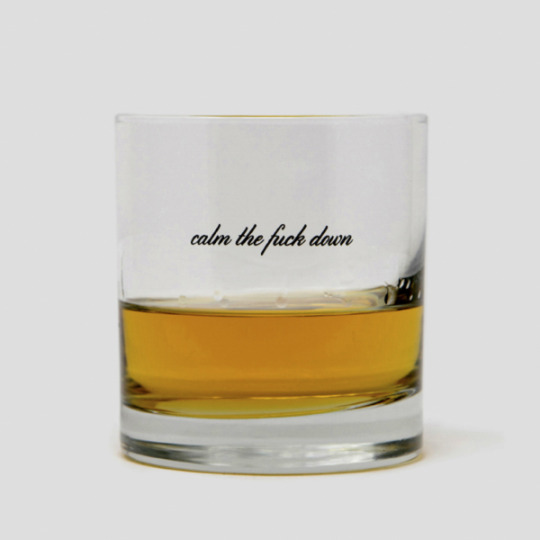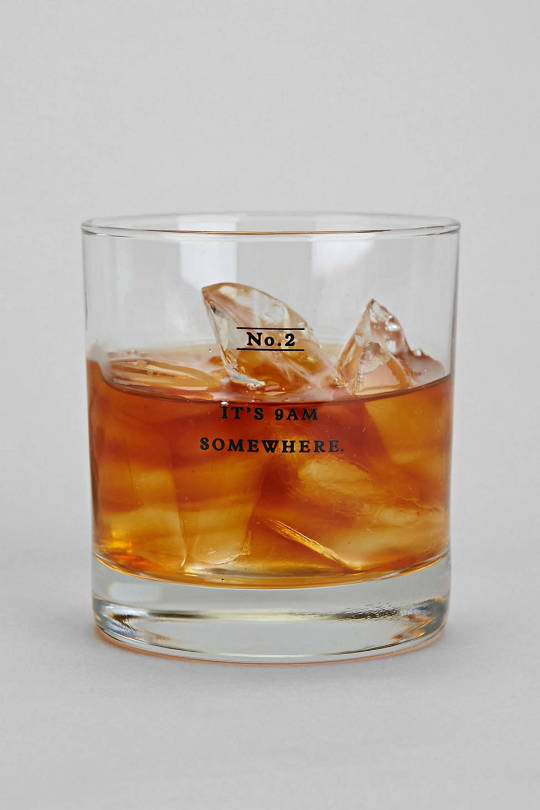President of ACN. Old school, no nonsense, unapologetic. Too old to be governed by dumb people. (A The Newsroom RP Blog)
Don't wanna be here? Send us removal request.
Photo

7K notes
·
View notes
Text
Glenlivet, one of the venerable names in Scotch whisky, experimented with something new this month: a tiny whisky cocktail that comes in a clear, edible packet instead of a glass.
It even came with a hashtag for social media: #noglassrequired. But Twitter users seemed unimpressed, and a little freaked out.
In a video released last week, Glenlivet described the walnut-size pouches as “edible cocktail capsules made from seaweed, meaning no need for a glass, ice or a cocktail stirrer.”
“To enjoy them, pop the capsule in your mouth and take a bite to release the delicious cocktail ingredients,” said the video, which as of Monday had been viewed more than 8.5 million times on Twitter. Three cocktails are available in the pouches, and the recipes were developed by Tayer + Elementary, a bar in London.
The capsules have been compared to Jell-O shots, Gushers, sushi, Tide pods, pizza rolls, Tide pods, Tide pods and Tide pods.
Last year, Tide pods were wrapped up in a notorious “challenge” in which people filmed themselves biting down on brightly colored laundry detergent packets (of any brand) and spitting out or ingesting the contents. A few teenagers ended up in hospitals.
But whisky capsules are meant to be ingested (by people of legal drinking age). You can swallow the clear pouch, which comes from Notpla, a London start-up whose biodegradable packaging products have been used for things like keeping marathon runners hydrated without plastic bottles and paper cups.
The Glenlivet whisky capsules aren’t trying (yet) to be the next big thing. They are available only until Sunday at Tayer + Elementary, as part of London Cocktail Week.
Glenlivet traces its history to a distiller named George Smith, who made whisky illegally in the valley of the River Livet in Scotland until 1824, when he became the first legal distiller in his parish. That earned the ire of his unlicensed peers, so he kept two pistols on hand at all times to protect himself, according to Glenlivet lore.
“Our founder, George Smith, always went against the grain, bucking tradition and doing things differently,” Miriam Eceolaza, the distillery’s director, said in a statement last week. “The Glenlivet Capsule Collection continues his pioneering spirit today.”l
In a statement on Monday, the brand said it “only promotes responsible drinking, and the capsules are designed to be enjoyed in moderation by adults in a regulated and licensed environment.”
And on Twitter, the company acknowledged the flurry of recent social media attention.
“It seems our cocktail Capsule Collection has caused a bit of a stir,” the brand tweeted. “We wanted to reassure you The Glenlivet is committed to producing safe, responsible & delicious products for adults. Our seaweed capsules are a limited London Cocktail Week release & are not available elsewhere.”
0 notes
Photo

George Bastian in The Tampa Tribune, Florida, March 10, 1924
592 notes
·
View notes
Photo

Drinking is bad, feelings are worse.
79K notes
·
View notes
Text
4 notes
·
View notes
Link
LONDON — In Scotland, you can buy a 16th-century castle for a little more than a million dollars.
On Wednesday, someone paid a similar amount for a 750-milliliter bottle of single malt whisky described as “the Holy Grail” of the dark alcoholic spirit: just over $1.1 million, a record.
The 60-year-old Macallan Valerio Adami 1926 is “one of the rarest and most desirable bottles ever produced,” according to a specialist at Bonhams, the auction house in Scotland that made the sale. The price included a bid of 700,000 pounds, or about $900,000, plus a £148,000 sales premium.
The identity of the private buyer was not revealed. But a Bonhams spokesman said on Wednesday that the person was from Asia and had made the bid over the phone.
The bottle was put up for sale in Edinburgh, sitting atop a display stand covered in tartan and encased in a specially designed cabinet.
The bottle’s value emanates in part from a link with an Italian. The Macallan, a Scottish distillery, commissioned the pop artist Valerio Adami to design a label for the whisky, which was bottled in 1986 after aging for 60 years.
Another factor in the single malt’s value is its rarity. Only 24 bottles of the Scotch were produced — 12 with labels by Mr. Adami and 12 with labels by another pop artist, the Englishman Peter Blake — and no one knows exactly how many remain.
One of the bottles with Mr. Adami’s distinctive black-and-white design is rumored to have been destroyed in an earthquake in Japan in 2011. It is thought that at least one other may have been opened and drunk.
That raises the question: How does a $1 million bottle of whisky taste?
For one expert, the Macallan Valerio Adami 1926’s flavor may not quite match its hefty price tag.
“When I tasted it, the whisky was quite intense, dry, and tasted of dried fruit with some hint of warming spice,” said David Robertson, a master distiller at the Macallan from the mid-1990s to the mid-2000s. “But I had to try a lot of whiskies over the years and in my humble opinion, there were a number that were better than this one.”
“It would be great to think that the whisky could be opened by the buyer,” Mr. Robertson added. “That is what it was produced for. But for some people, opening a $1.1 million bottle of whisky is quite a big decision.”
The sale is the second time this year that a bottle of whisky has gone for a record amount. In May, a bottle from the Macallan Valerio Adami 1926 edition fetched 8.6 million Hong Kong dollars, about $1.1 million, at Bonhams in Hong Kong.
If the new buyer chooses to preserve the bottle untouched, the fate of the world’s most expensive bottle of vodka serves as a cautionary tale.
The gold and silver bottle, with its diamond-encrusted cap, which was said to be worth $1.3 million, was stolen from a bar in Copenhagen in January.
After days of searching, the police found the bottle dented — and empty.
0 notes
Link
A movement toward global food tourism may provide the push. In part, that shift is a legacy of the late writer and TV host Anthony Bourdain, who was always game to try something new, however disconcerting, because he respected the fact that in another culture, it was beloved. Now, at the fine-dining restaurant Quintonil in Mexico City, diners pay hundreds of dollars for a tasting menu that might feature grasshopper adobo and escamoles (ant eggs), which the former New York Times food critic Ruth Reichl equated in texture to marshmallows. Humbler preparations are also gaining popularity: Baseball fans at Safeco Field in Seattle happily toss back crunchy chapulines (grasshoppers); more than 18,000 orders were sold in the first two weeks of the 2017 season. The insects come from Oaxaca, Mexico, where they are a familiar snack, and cooked in the traditional style: After being boiled, dehydrated and shucked of legs and antennae, they’re mobbed by chiles and kissed with lime juice.
It can be difficult to adopt the wisdom of other cultures. But imagine the rewards of biting into a witchetty grub from the Australian bush, which Aborigines traditionally dug from the roots of acacia trees, and which the Japanese chef Shoichi Uchiyama compares to fatty tuna, at once meaty and melty. In the Nordic Food Lab’s 2017 cookbook “On Eating Insects,” Josh Evans, a Canadian researcher, describes ants foraged from a Danish forest as lemony, “with a hint of burnt sugar — like lemon rinds seared on the grill,” and a wood cockroach, when roasted, as redolent of “coffee and chocolate, malt and black mustard.”
It’s useful to remember that our ancestors didn’t eat bugs simply out of proximity or necessity or perceived impending apocalypse. They also did it out of desire: for the crackle of the exoskeleton and the gooeyness within, followed, perhaps, by a Thai silkworm’s underlying lilac must; or the cosseted funk of dried shrimp, evoked by a Ugandan katydid; or the clean, clarifying aroma of bruised lemongrass, as with an Amazonian saúva ant. They ate insects because insects are delicious.
0 notes
Text

From the Desk of Charles Skinner turned 5 today!
1 note
·
View note







